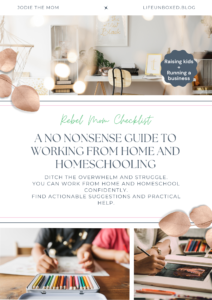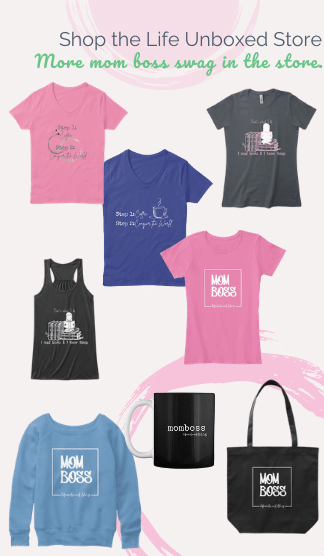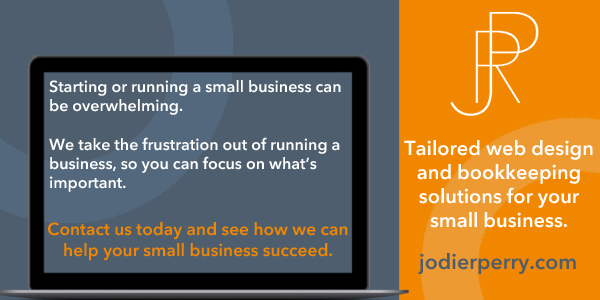Building a website can be daunting, overwhelming, frustrating and whatever other adjective you can think of. In this post I am going to give you 7 things to do before you start to make the process of building a website easier.
Having a website is one of those non-negotiables for your business. US consumers, 84% of them, believe a business with a website is more credible than one that only has a social media page. And 90% of people use the internet to find local businesses. Think about your own search habits. When you need a service or a product, you probably head to the internet first.
Some of the links in this post are affiliate links. If you purchase using one of these links, I make a small commission at no additional cost to you. This helps me keeps things free for you, and who doesn’t love free stuff. For more information, see my disclosures.
To Start or Grow Your Business Requires Building a Website
You will increase your business possibilities by creating a website, but it can be overwhelming and frustrating. If you are starting or growing a business there is no way you can do it without a website.
Even if you aren’t a web designer, you can still build a website. I would recommend using the Divi theme as it is very flexible and easy to use. But before you jump in and start building a website there are few things to do to make the process easier.
7 Things to do before you Start Building a Website to Make the Process Easier
Whether you decide to do it yourself or hire a web designer these 7 things will make the process so much easier. If you hire a web designer this will be a starting point for the brief that you give to your designer.
I am going to give you this list, and then we will go through how to do each one.
I would recommend doing these in order
- Pick Colors
- Choose your domain
- Decide on hosting
- Create logo
- Pick fonts
- Create an outline (decide on your pages)
- Sketch out your page layout
- Bonus: Pick your theme
How to Decide on Colors for Building a Website
1. Stick with 2-3 colors
You don’t want to go crazy with the colors because your site will end up looking like a tie-died hippie.
2. As you pick your colors
Keep in mind that they will be incorporated into your logo, social media images, throughout your website, and any place your brand has a home.
3. Pick colors you really like
4. You can get into color theory and the emotional effects of different colors
- Like blue reflects trust, serenity, and logic
- Red is excitement, passion, and appetizing
5. Regardless of how you decide your colors start with an anchor color
- a color that catches your eye
- it would look nice taking up a lot of space on your website without being hard on the eyes
- it pairs easily with images
- For example the anchor color on jodierperry.com is the prominent gray blue
- This was also the anchor color for lifeunboxed.blog because I wanted to have tie in between the two sites
6. How do you actually find the color for building a website?
There are a few places to get inspiration:
- Nature—the red in fall leaves, blue sky, flowers.
- Other websites—you don’t have to copy all the colors, but if there is one that catches your eye you can use.
- You can use browser extensions like colorzilla or colorpicker to find out the hex code for the color you see on the web
- Get a screenshot put it in photoshop, or another photo editor and use the sample tool to find out the color codes
- You will want to get the hex code, rgb, and cmyk
If you are using the Divi theme you will use the hex code to put in your custom colors. RGB is the color profile that you use for web, CMYK is the color profile that you would use for print. It is good to have your colors in all these formats; write them down in a place that is easy for you to reference because you will be using them a lot.
Use an online color picker like Coolors.co lets you explore trending palettes, so a great place to get ideas or you can start the generator
- Enter the hex code if you have it, or upload a photo that you want to pick a color from
- Hit the space bar until you find the color you like
- Lock it in to generate complimentary colors
Paletton is nice because it shows you the color wheel and the varying shades of your anchor color.
- Enter the hex code in the base RGB
- Choose how you want to view the color wheel
- Adjacent colors
- Triad
- Tetrad
- Or freestyle: Hold the shift and check out colors on the same spectrum
- If you are unsure of your colors it is great for suggestions
Choose Your Domain for Building a Website
I am sure you thought I was going to talk about your logo, but it is more important to choose your domain before you start designing your logo. Because the domain that you want may not be available. You don’t want to start on your logo, and get attached to something and then not be able to get the domain.
1. Purchasing Domain
I would recommend purchasing your domain with your hosting to keep things simple, and many hosting services offer free domain registration for the first year, but we will talk about hosting more in-depth towards the end of our conversation
2. You can search for your domain on a few websites:
Go to domains and have fun
3. Don’t panic buy if you see that your domain is available
4. Don’t panic if the domain you had your heart set on is taken either
- There are so many domain extensions now you can probably find your domain with one of these alternative extensions.
- In years past, anything other than dot com was seen as shady, now it is common.
- So is there a domain extension that would make sense for your website. For example, lifeunboxed.com is a premium domain (I could buy it but is would cost $3500, yeah not gonna happen right now), so I went with lifeunboxed.blog which totally makes sense, since it is a blog website.
- Find a good thesaurus and see if you can come up with an alternative name.
5. A few things to keep in mind when selecting a domain
- Don’t make it too complicated. For example, I would stay away from lots of hyphens. I know people are using this as an alternative, but it is hard for people to remember.
- Try to keep it short.
- Avoid using numbers for things like for or to (these are just suggestions, not hard rules)
- It needs to be memorable, something that is easy for people to remember.
- Avoid using words such as the or my. For example, thelifeunboxed or mylifeunboxed. People will forget to add the or my
Buying Hosting and Your Domain for Building a Website
Now that your domain search is complete, and you found your amazing domain name. It is time to look at hosting. I am going to give you my top 3 recommendations. Now, full disclosure, I have only used one for all my websites. But looking at the other two, I would totally use them if I was looking for hosting, so I have no problem recommending them.
1. My first recommendation is Bluehost
- I have been using them for all my websites and client websites, and I’ve never had an issue with them.
- I have needed their customer service support to work out server issues, and they have been helpful and solved my problem.
- Now, I know that there are many website gurus who don’t like Bluehost because it is cheap service, and there are better ones out there. I won’t argue with either of these points.
- Five years ago we didn’t have so many choices, and Bluehost was and still is the recommended hosting for WordPress.
- It is much cheaper than the other services, and when you are starting out sometimes that has to win out.
- Again, I’ve never had any problems with them and when I needed help they were very helpful.
- So if you are starting out on a budget, I would totally recommend Bluehost.
2. Siteground is my second recommendation
- They are quite a bit more than Bluehost, almost 3 times as much as Bluehost after the initial rate period.
- All these hosting companies have introductory rates and then the price goes up, so make sure you see what the price is after the intro period.
- For me that is the biggest downside, but they have great service. There servers are very fast, and all those web gurus I mentioned above, highly recommend Siteground.
- When I get to the point of outgrowing Bluehost, I will probably take the leap and migrate everything to Siteground.
3. My final recommendation is Hostinger
- Their pricing is comparable to Bluehost, in some instances a little cheaper.
- They have a great introductory rate.
- They don’t offer unlimited websites like Bluehost or Siteground, but you still get 100 websites. If you are managing more than 100 websites you may want to look into a premium hosting service.
- I’ve never used this service, but I’ve heard good things about it. And if you are starting your business on a tight budget this is definitely a hosting service that you need to check out.
4. A few final thoughts on hosting services for building a website
- Take advantage of the privacy add-on Bluehost and Siteground offer. This as an additional service when you purchase a domain.
- It keeps your personal information from public databases. When you purchase one of these services it will replace your personal information with generic information from the hosting service.
- If you start with a hosting service and don’t like it. You can always change to another service. This doesn’t come without some headaches, but you can do it. Hosting is not a lifelong commitment.
Create Your Logo
Now we are shifting back into the creative side of things. You have your colors, your domain name, so now you can create your logo. And there are so many ways to do this. I am not going into great detail on this one because I do in another post. Here are a few of the numerous ways you can create a logo.
1. Decide what you want in a logo. Get inspiration from logos you like.
2. I like the book Logotype by Michael Evamy to get ideas on typeface logos.
3. Do it yourself.
4. Use Canva.
5. Commission an artist on Fiverr.
Depending on what you want in a logo it can be as little as $15.
7. Use 99designs.
This is a more expensive option. I like the fact that you can create a contest and get a number of options to choose from. There are also a few alternatives to 99designs.
8. Commission a local artist/graphic designer
I haven’t given a lot of detail on this. Check out The Many Ways to Create a Business Logo, I dive into all these topics more in-depth. I also talk about usage rights and preparing a brief for your artist.
Pick Your Fonts
If you hire a designer they may have suggestions on font choices. Especially, it they are creating a logo type for you. But the fonts for your website and your print materials don’t need to be the same as your logo. They just need to look good with your logo.
Picking fonts is a lot like picking colors. You don’t want too many. I usually pick a title font, subheading font, and a body font.
If you are using the Divi theme for your website, Google fonts comes as part of the theme.
The best way to look at all the fonts is to visit and scroll through the page.
1. When picking a title font you can get decorative if you want.
Since this font will be larger than the rest of the font on your page and it will be few words.
2. For subheadings you can pick a decorative font or a font that is easy to read.
3. Body font.
This is where it really counts picking a font that is easy to read. Most people use mobile devices more than desktops/laptops now. So you need a font that will show up well.
4. In publishing, it is recommended to use a serif font.
A serif font is something like Times New Roman. It has the hooks at the end of the letters. Serif fonts are supposedly easier to follow on a line.
5. For websites you can use serif or sans serif (example of a sans serif font is Arial).
Just pick a font that will be easy to read. If you are creating a blog, pick a font that won’t bother the eye if you were to read large portions.
6. I know I am giving a lot of recommendations, but this doesn’t need to be complicated. What catches your eye?
7. There is another tool that is a lot of fun to use to see font pairings.
Fontjoy.com will give font suggestions.
- You click the slider icon and you can put in your heading text.
- Lock the font.
- Then hit generate.
- It will generate suggestion that match the font.
- You have the title, subheading, and body text.
Create an Outline for Building a Website
It is time to go back to school. Remember all those papers you had to write, and the outlines you had to make before you started writing. This is what you need to do.
1. Create an outline so you know what pages you need on your website.
2. It will also give you a starting point for your site navigation.
What you have on the outline will more than likely end up being the links to your subpages.
3. You don’t need to start writing content right now.
Just start generating ideas. And when you are ready to start writing content, just like in school, you have an outline.
4. Here’s an outline for my jodierperry.com site.
5. It doesn’t need to be complicated.
Start getting your ideas on paper. It will help to solidify them and start to clarify what you want to say.
6. If you are unsure, do a brain dump and just write down all your ideas as fast as they come.
Sketch Your Page Layout
Get a sketchbook or plain paper and start drawing how you want you site layout to be. Here is a digital sketch I did for a client. So this was attached to the proposal to give her an idea of what I had in mind. Here is the end result of the website.
Whether you hire a designer or end up doing it yourself, a sketch of the pages will be extremely helpful when you start building. If you hire a designer, they will more than likely show you an idea of the website before they start building.
Pick Your Theme for Building a Website
Unless you are an expert coder, you will want to pick a theme for your WordPress site. The theme I use is Divi. I’ve been using this now for over 5 years, and it has evolved so much since I first started using it.
When I built my jodierperry.com site. I had to use CSS to get the look I wanted. Divi has evolved to the point that you can build a website without using CSS, and that is a big selling point.
Divi offers a yearly subscription or a lifetime subscription. I recommend the lifetime subscription because we started with the yearly subscription, liked the theme and continued to use it. By the time we bought the lifetime subscription, we had spent the same amount renewing the yearly subscription.
If you decide to use this theme for your business website, subscribe to the Lifeunboxed YouTube channel. I will be creating more videos on how to build a website using the Divi theme without CSS.
We have covered a number of topics in this post. If you follow these in order, you will be well on your way to building your website.





















0 Comments